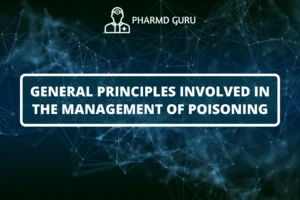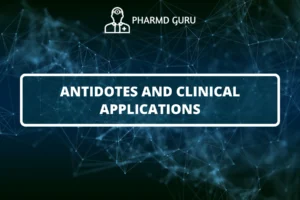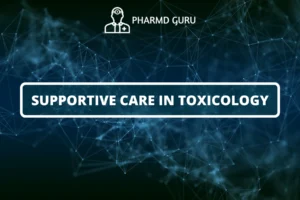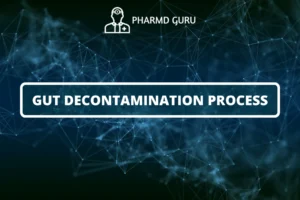Tobacco Poisoning: Tobacco use remains a significant public health concern worldwide, leading to numerous health consequences and increased risk of various diseases. In this article, we will explore the sources of tobacco, active principles, mode of intake, mechanism of action, clinical symptoms of tobacco poisoning, health consequences of tobacco use, nicotine withdrawal, investigations, and management strategies.
SCROLL DOWN TO THE BOTTOM OF THE PAGE FOR ACTUAL NOTES
TABLE OF CONTENTS:
- Sources of Tobacco
- Active Principles in Tobacco
- Mode of Intake
- Mechanism of Action
- Clinical Symptoms of Tobacco Poisoning
- Health Consequences of Tobacco Use
- Nicotine Withdrawal
- Investigations for Tobacco Poisoning
- Management of Tobacco Poisoning
1. Sources of Tobacco
Tobacco is derived from the leaves of the Nicotiana tabacum and Nicotiana rustica plants. These plants are primarily cultivated in regions with suitable climatic conditions for their growth, such as North America, South America, Asia, and Africa. Tobacco leaves undergo various processing techniques to produce different tobacco products, including cigarettes, cigars, pipe tobacco, and chewing tobacco.
2. Active Principles in Tobacco
The primary active principle in tobacco is nicotine. Nicotine is an alkaloid that acts as a potent stimulant and is responsible for the addictive properties of tobacco. Other harmful substances present in tobacco smoke include tar, carbon monoxide, and various carcinogens.
3. Mode of Intake
Tobacco is commonly used through smoking, which involves inhaling the smoke produced by burning tobacco products. Other modes of intake include chewing tobacco, snuff (powdered tobacco), and using electronic cigarettes (vaping). Each method delivers nicotine and other harmful substances into the body, albeit with varying levels of exposure.
4. Mechanism of Action
Nicotine rapidly enters the bloodstream and reaches the brain, where it binds to specific receptors called nicotinic acetylcholine receptors. This binding triggers the release of various neurotransmitters, including dopamine, which contributes to the pleasurable effects and reinforcement of tobacco use. Nicotine also affects other neurotransmitter systems, leading to increased alertness, reduced appetite, and altered mood.
5. Clinical Symptoms of Tobacco Poisoning
Acute nicotine poisoning is rare but can occur with high-dose exposure, especially in children or accidental ingestion. Symptoms may include nausea, vomiting, abdominal pain, increased heart rate, elevated blood pressure, dizziness, tremors, seizures, and even respiratory distress. Chronic tobacco use can lead to numerous health consequences, as discussed in the next section.
6. Health Consequences of Tobacco Use
Tobacco use has severe health consequences and is a leading cause of preventable diseases, including:
- Respiratory disorders: Smoking increases the risk of lung cancer, chronic obstructive pulmonary disease (COPD), bronchitis, and respiratory infections.
- Cardiovascular diseases: Tobacco use significantly raises the risk of heart disease, stroke, and peripheral vascular diseases.
- Cancer: Smoking is linked to various types of cancer, including lung, throat, mouth, esophageal, pancreatic, bladder, and kidney cancers.
- Reproductive effects: Tobacco use during pregnancy increases the risk of miscarriage, premature birth, low birth weight, and developmental issues in infants.
- Dental and oral health problems: Smoking contributes to gum disease, tooth loss, oral cancer, and bad breath.
- Compromised immune system: Tobacco use weakens the immune system, making individuals more susceptible to infections.
- Skin aging: Smoking accelerates skin aging and increases the risk of wrinkles, sagging skin, and skin cancers.
7. Nicotine Withdrawal
Nicotine is highly addictive, and cessation of tobacco use can lead to withdrawal symptoms. Common nicotine withdrawal symptoms include irritability, anxiety, restlessness, depressed mood, difficulty concentrating, increased appetite, and intense cravings for tobacco. These symptoms can be challenging to manage but typically subside over time.
8. Investigations for Tobacco Poisoning
In cases of suspected tobacco poisoning, investigations may not be necessary unless there are specific indications or complications. However, healthcare professionals may perform tests to assess nicotine or its metabolites in the blood or urine, especially for monitoring purposes or in cases of acute poisoning.
9. Management of Tobacco Poisoning
The management of tobacco poisoning involves various strategies:
- Supportive care: The primary approach is to provide supportive care to alleviate symptoms and monitor vital signs. In severe cases, hospitalization may be necessary for close observation and management of complications.
- Symptomatic treatment: Medications may be prescribed to manage specific symptoms, such as antiemetics for nausea and analgesics for abdominal pain. The focus is on relieving discomfort and addressing complications if they arise.
- Smoking cessation: For individuals who survive tobacco poisoning, quitting tobacco use is crucial to prevent further harm. Healthcare professionals can provide guidance, counseling, and appropriate pharmacotherapy to aid in smoking cessation.
ACTUAL NOTES




